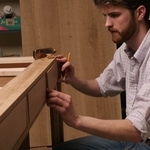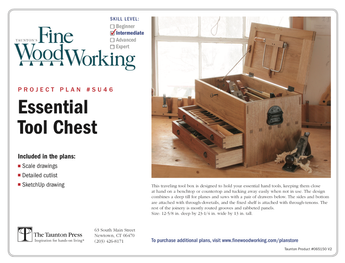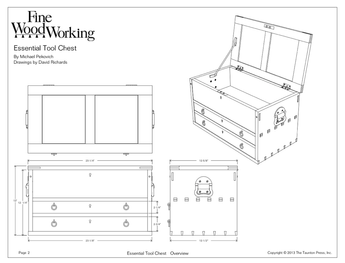Hi all,
I’m working on a mahogany coffee table with a 3/4″ thick top. I’m inlaying an 1/8″ strip of maple along the outside edge of the top, and I’m worried about the inlay breaking as the wood shrinks and swells.
Would some sort of expansion joint cut into the inlay be appropriate? How is this problem dealt with?
Here’s a rough picture of what I’m doing:
Justin Fink – FHB Editorial

















Replies
Justin, I done about the same thing only with a cherry top and a macasser ebony inlay. My inlay was 3/8" wide and about 3/16" thick. The table is four years old and I have not had any problems.
This is a table my daughter designed for a certain spot in her apartment.
The material used was poplar and walnut.
The top edges are approximately 3/4 inch wide walnut veneer that I cut to the radius' and the edging is walnut veneer.
When she asked me to build this for her I was reluctant because of the cross grain situation. It has been two years now and there has not been any problems todate.
I still have my test piece that I used for setup in my shop and I check every now and then just to track any changes and the only thing I see is the very slightest difference in thickness of the finish where the walnut meets the poplar on the top.
View Image
View Image
Garry
http://www.superwoodworks.com
Sheesh Justin, a 2 meg attachment?
Someone should take your gavel away...Hah, hah, ha...
Shrink it down and I'll have a look.
Lee
First, I envy your computer graphic skills.............
I've done this sort of thing a lot (1/8" inlays in solid stock), and have never had to use any kind of expansion slots.
I make the inlays ever so slightly larger than the 1/8" goove (which I generally cut about 3/16-1/4'' deep), round over the bottom edge of the inlay slightly, run a tiny bead of glue in the groove, and tap the inlay in with a block. Then I hand plane it flush -- and, this is easier if you do one strip at a time, then glue in the next strip.
But Rob Millard is the real expert around here on inlay techniques. I'd do whatever he says.
********************************************************
"I tend to live in the past because most of my life is there."
-- Herb Caen (1916-1997)
Justin,
Go ahead and glue the inlay in place, it'll be alright. I can't explain why, maybe because the inlay is so small it just can't fight the movement of the top, but it will stay put.
I've inlaid numerous pieces including crossbanding and stringing the edges of dining tables, and have not had a problem in thirty or so yrs. Titebond glue, mostly.
Regards,
Ray
Well thanks for all the help folks, I glued up the remaining inlay last night...I guess only time will tell if the joint holds up now.
But I suspect that the tabletop would have to shift wildly, and literally split apart down the center seam for the inlay to break in half. But better safe than sorry, thanks for all the advice (read: confidence boosting).Justin Fink - FHB Editorial
This forum post is now archived. Commenting has been disabled